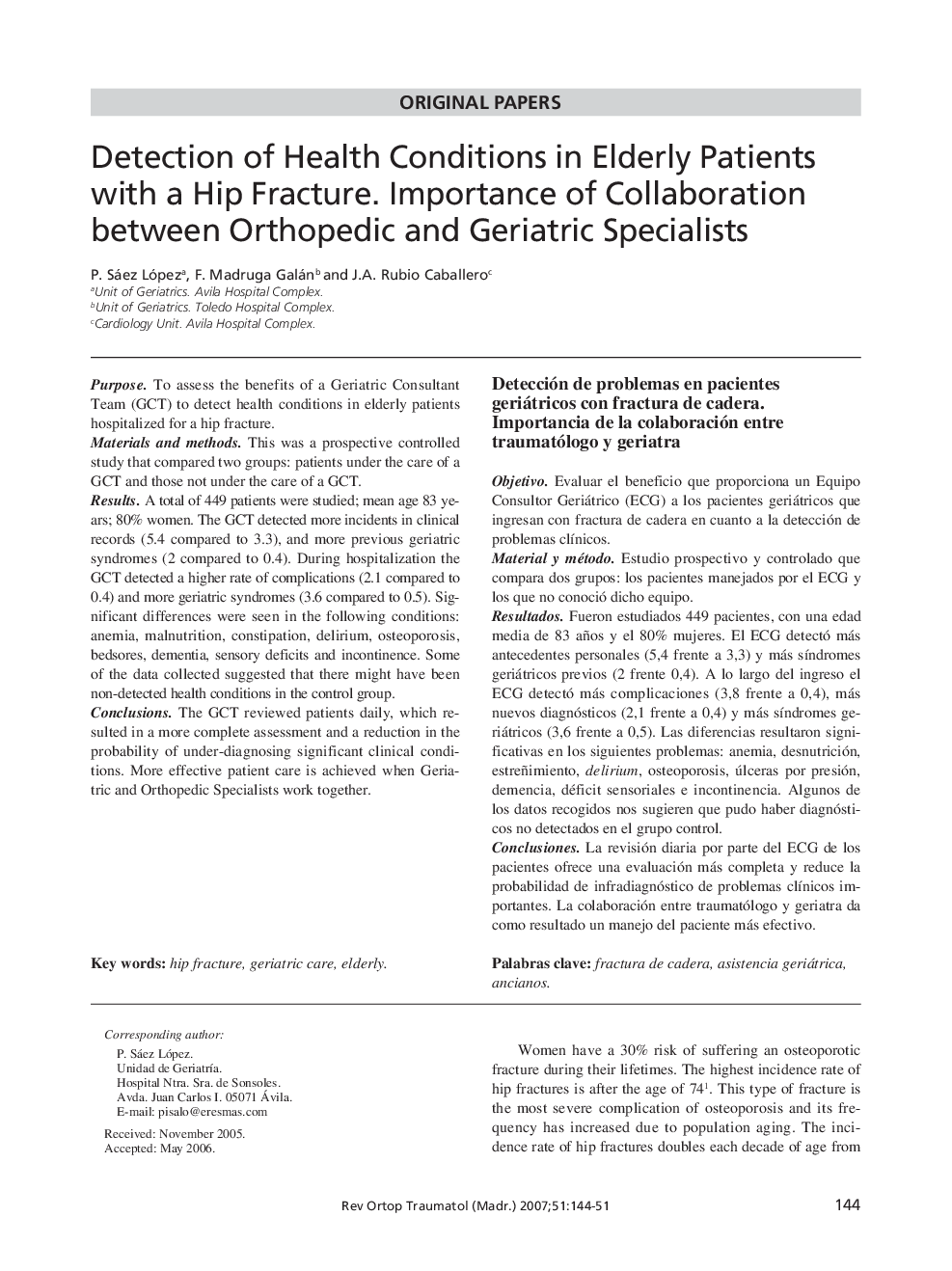| کد مقاله | کد نشریه | سال انتشار | مقاله انگلیسی | نسخه تمام متن |
|---|---|---|---|---|
| 4087796 | 1268061 | 2007 | 8 صفحه PDF | دانلود رایگان |

PurposeTo assess the benefits of a Geriatric Consultant Team (GCT) to detect health conditions in elderly patients hospitalized for a hip fracture.Materials and methodsThis was a prospective controlled study that compared two groups: patients under the care of a GCT and those not under the care of a GCT.ResultsA total of 449 patients were studied; mean age 83 years; 80% women. The GCT detected more incidents in clinical records (5.4 compared to 3.3), and more previous geriatric syndromes (2 compared to 0.4). During hospitalization the GCT detected a higher rate of complications (2.1 compared to 0.4) and more geriatric syndromes (3.6 compared to 0.5). Significant differences were seen in the following conditions: anemia, malnutrition, constipation, delirium, osteoporosis, bedsores, dementia, sensory deficits and incontinence. Some of the data collected suggested that there might have been non-detected health conditions in the control group.ConclusionsThe GCT reviewed patients daily, which resulted in a more complete assessment and a reduction in the probability of under-diagnosing significant clinical conditions. More effective patient care is achieved when Geriatric and Orthopedic Specialists work together.
ObjetivoEvaluar el beneficio que proporciona un Equipo Consultor Geriátrico (ECG) a los pacientes geriátricos que ingresan con fractura de cadera en cuanto a la detección de problemas clínicos.Material y métodoEstudio prospectivo y controlado que compara dos grupos: los pacientes manejados por el ECG y los que no conoció dicho equipo.ResultadosFueron estudiados 449 pacientes, con una edad media de 83 años y el 80% mujeres. El ECG detectó más antecedentes personales (5,4 frente a 3,3) y más síndromes geriátricos previos (2 frente 0,4). A lo largo del ingreso el ECG detectó más complicaciones (3,8 frente a 0,4), más nuevos diagnósticos (2,1 frente a 0,4) y más síndromes geriátricos (3,6 frente a 0,5). Las diferencias resultaron significativas en los siguientes problemas: anemia, desnutrición, estreñimiento, delirium, osteoporosis, úlceras por presión, demencia, déficit sensoriales e incontinencia. Algunos de los datos recogidos nos sugieren que pudo haber diagnósticos no detectados en el grupo control.ConclusionesLa revisión diaria por parte del ECG de los pacientes ofrece una evaluación más completa y reduce la probabilidad de infradiagnóstico de problemas clínicos importantes. La colaboración entre traumatólogo y geriatra da como resultado un manejo del paciente más efectivo.
Journal: Revista Española de Cirugía Ortopédica y Traumatología (English Edition) - Volume 51, Issue 3, May–June 2007, Pages 144-151